I love watching horses working in the forest – it projects me right back to when I was a youngster spending much of my time with a big white Welsh Cob horse named Charlie, extracting first thinnings for the Forestry Commission. Back then, chainsaws were used for felling the trees (chainsaws were not able to de-limb the branches as this was prior to the Tillitson diaphragm carburettor, which allowed chainsaw engines to run properly at any angle) and the snedding was done with an axe. Charlie was a good-natured horse with a lot of character and his home was a corral about 200m away from our house. As soon as four o’clock came he took off for the corral; it didn’t matter where he was or if he had a drag of wood or not, that was him finished and nothing could stop him.
I have come across quite a few horse logging operations during my career and I always find time to observe these fascinating and majestic creatures at work. Naturally, when I found out that Simon Lenihan and his sons were using horses for logging in the Lake District I couldn’t wait to go down and see them. We travelled down to Bowness on Windermere to stay overnight and this was a huge culture shock. We had left Scotland in the afternoon where bars and restaurants are closed and the high streets deserted and arrived in an area that was busy and bustling with everything open. Everything felt almost normal again, and it was lovely to be able to sit in a pub with a nice meal and a pint.
The following morning – after a few wrong turns and Simon coming to the rescue – I eventually made it onto site. It was a horrible, wet, miserable day, but even that couldn’t dampen my excitement at what I was about to see.
Simon’s love affair with horses started when he was an infant growing up on a horse powered farm. His family has an unbroken chain of working with horses spanning back hundreds of years as previous generations have always used horses for the day-to-day running of the farm, and they were also used for drawing gravel and peat on a contract basis in Ireland. Just over 30 years ago Simon and his wife Kate decided the time was right to start their own Horse Logging business. They worked as a husband and wife team, with Simon carrying out the felling work and Kate extracting the timber with their horse.
The job was arduous, sometimes requiring them to work for over 40 days straight without time off just to complete a contract on time, and often they were away from home for months on end. It may sound like a hard way to make a living but Simon wouldn’t have it any other way – each day brought new adventures and experiences and he loved being outdoors working alongside Kate and his beautiful horses.
The business model changed somewhat as Simon and Kate started a family, with Kate spending more time at home bringing up their six sons. Simon is extremely proud that today all of his boys work in forestry; Ian and Keith are arborists working for the electricity board and the other four – Simon, David, Mark and Danny – are all involved in the horse logging business.
Successful horse logging requires a high level of skill from both the horseman and horse which can take years of training to achieve. Simon explained that he starts training his horses in the forest when they are about three years old, working with very light drags on flat, easy ground conditions:
“They are still just babies and we keep the training going for the next two years; we increase the severity of the ground they are working on and the size of the drag over a period of time.”
Simon has five stallions and one brood mare and the breed is North Swedish. He has also kept Belgian Ardennes in the past. The couple presently breed their own stock and train all their own horses. Bolero was wild as a youngster and after purchasing him it was over two weeks before anyone could get close to him; he ran in his corral from morning until the small hours and appeared inexhaustible but – with patience and perseverance on Simon’s part – he has turned out to be brilliant horse with a fantastic nature. During our conversations it became blatantly obvious that their horses are part of the family as well as work partners and are treated as such.
Simon has sent his sons to America, Canada, Germany and Sweden to be trained by some of the best practitioners of horse logging in the world. The industry is naturally a close knit community where many keep in regular contact and try and help each other as best they can.
The Lake District’s terrain is ideally suited for horses; it is steep and rocky with a lot of sheer drops in places. “If you go back a few decades, horses were extracting most of the timber in the Lake District – there were over 60 horses working around here at one time. I understand that all methods of logging have their limitations and we are happy to work in conjunction with mechanical equipment,” said Simon.
On the site he was working during our visit, a Valmet 8050 tractor with a 10-tonne Rytec forwarding trailer owned by Stuart Wilson was secondary extracting the timber about a mile down a forest track to the loading bay. A good proportion of Stuart’s work is working along with Simon and his horses.
“Thirty years ago a close friend of mine, George Read, was working with his horses for the Forestry Commission in Grizedale forest when the first harvesters arrived on the scene. After completing the job he asked if there was more work available, and was promptly told by the forester that if he could compete with the price per tonne and production of a harvester/forwarder team he would get all the work in the world. Most authorities and forestry companies still adopt this attitude and it seems to me that you can cause a lot of damage to soft and sensitive sites as long as they turn a good profit. Any work we carry out that is visible to the public sees us inundated with people interested in what we are doing. It slows our production but we all enjoy chatting to people about our horses and the kids love getting up close with them. We are delighted to be involved with schools and colleges and are happy to welcome them and show them what we are about if they want to visit us. We also work with children and adults suffering from autism, army veterans and other vulnerable groups using the horses for equine therapy. My son Mark has trained in this and he is now a qualified equine therapist.”
There was only Simon and his eldest son (also called Simon) with their stallion Bolero on site that day and while I was chatting to Simon Sr., Bolero and Simon Jr. were working non-stop with drag after drag up and down a steep hill to the loading bay. This location included a mixed crop of hardwoods and softwoods that was being thinned, while the topside was predominantly hardwoods with about 30% being selected for removal. This was proper thinning where the smaller and dead and dying trees were being removed to reduce overcrowding and relieve tree stress. This helps to improve forest health and increase wildlife habitat, protect them against storms and fires, while also adding value to the remaining crop.
During our chat it became clear that there would be no other way to extract the timber that Bolero was extracting down the narrow, steep extraction path. He was weaving himself around large rocks and boulders and had some tight corners to negotiate. It would take some serious excavation work to get a harvester, forwarder or skidder up there and would then cost a fortune to reinstate the ground when finished. Given the produce amounted to between 30 to 40 tonnes of firewood quality sycamore, it would have been unrealistic to even consider this option.
A skyline would work but again set up and moving costs would prohibit the use. There are small tracked mini-skidders available but excavation work would have to be undertaken to remove some of the large boulders as they would be impossible to drive around; moreover, with the leafy, mulchy top soil, there could be more skiing rather than skidding. I have never thought much about it but, during the first drag down the hill, Simon Jr. led Bolero and steered him wide round a sever corner so the timber being dragged would not catch on a rock. After this first drag Bolero understood and went wide with every drag without being led, showing a hugely impressive level of intelligence.
I presumed that all of Simon’s work was local and in the Lake District, but unfortunately he gets little support from Forest Enterprise England or any management companies in the Lakes: “We are not recognised as bona fide contractors by Forest Enterprise England – I have contacted their offices in the North and West Lake District but never even got a reply from anyone.” This means that Simon has had to journey far and wide to keep working, travelling as far north as Huntly in the Grampians and as far south as Cornwall. He does have two big supporters though; the Woodland Trust has been one of the leading lights over recent years in promoting working horses in Forestry, while his other champion is HRH Prince Charles, the Prince of Wales:
“He has been a great supporter of our work and we worked for Prince Charles for a number of years at Her Majesty the Queen’s estate at Balmoral and at Prince Charles’ estate in Cornwall. For his 60th birthday, the Prince was asked to co-edit the Country Life magazine and he was asked what his ten champions of the countryside were. We were over the moon to be named as one of his champions for our work with horses in forestry.”
I recon Sir Simon has a nice ring to it, and the New Year’s honours are not that far away!
“We believe that our method of timber harvesting is the most modern and ecological system available – our horses are carbon neutral, sustainable and powered by nature. Their fuel is hay, grain and water with their by-product used to re-fertilise the soil. Horse logging has a reputation of being expensive but this is often a smokescreen used by companies to justify the use of mechanised harvesting on sensitive sites. I get very disappointed as the environment appears to take second place to profit.”
I was impressed with the rate of production as every time I looked over Bolero was arriving at the landing with another drag. The rain got heavier as the morning went on and the ground was becoming steadily more saturated, yet this didn’t hinder Bolero or Simon Jr. The poor conditions highlighted another advantage of this method of extraction as there was evidently minimal damage.
Bolero adapted easily to the wet conditions; he could tell if the drag behind him was speeding up on the steep hill and adjusted his speed accordingly. Once at the landing, he would stand and wait patiently for Simon Jr. to make his way down the hill and unhitch the trees. It was a pleasure watching them work together. They use special choker chains which are much lighter than those used with a skidder. The C link is of a square design which grips better, thus preventing it from slipping off the end of the log when skidding wet and slippery sycamore.
To keep in work locally Simon is purchasing his own timber direct from the forest owners. These are generally smaller and more awkward parcels to harvest that hold no interest to larger the companies. There are still some forest owners with a conscience that are trying to do their bit by offering work to Simon so that horse logging can continue for generations to come. He has all the bases covered with his horses by incorporating some of the latest technology. For example, on flatter and easier ground conditions he has a Finnish made Jesty Hepo horse-drawn forwarder trailer with its own loader; these units are made to order and are 1,400kg when empty, with the capacity to carry payloads of 5m³. It arrives fitted with a 13hp Honda engine, which in turn powers a hydraulic pump that operates the loader and supplies drive to the rear wheels of the trailer. This is particularly useful on some longer hauls and again has minimal impact on the ground.
Simon is proud that his small operation keeps his pound local and benefits local businesses, including the farrier, harness maker, feed store, hay merchant, stray merchant and the vet.
Having had dogs most my life, there is one that I had that stood out above the rest and I wondered whether it was the same for Simon with his horses:
“There was one Ardennes Stallion, Sultan, and we worked together for 15 years. He was one of a kind and we had an amazing bond. I was heartbroken when he died in 2015 and still miss him every day – my family are all aware that my final request when I depart this mortal body is to be buried with him.”
It was a privilege to meet Simon and his son and the bond they have with their horses is evident for all to see. At lunchtime they took Bolero to a sheltered spot where he was given food and water before either of them started their own lunch. Simon Sr. and Jr. then had their lunch alongside Bolero so that all the team could eat together.
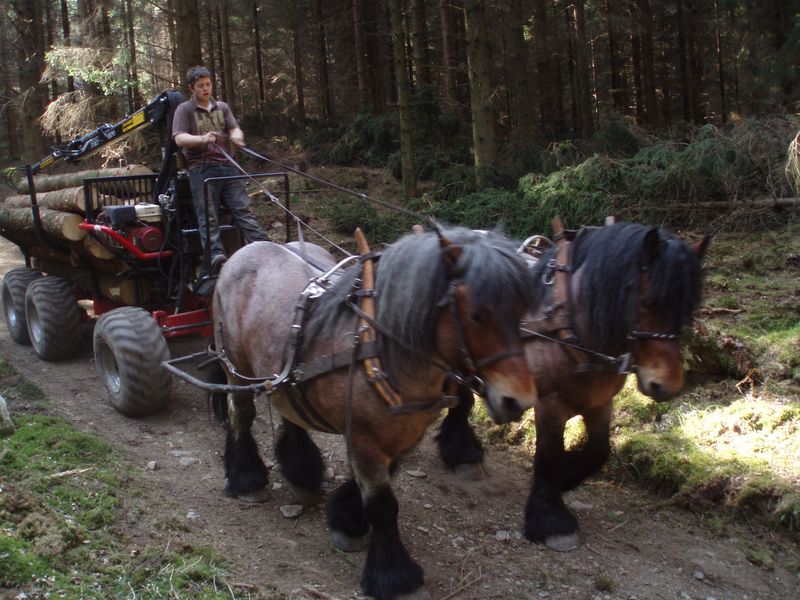

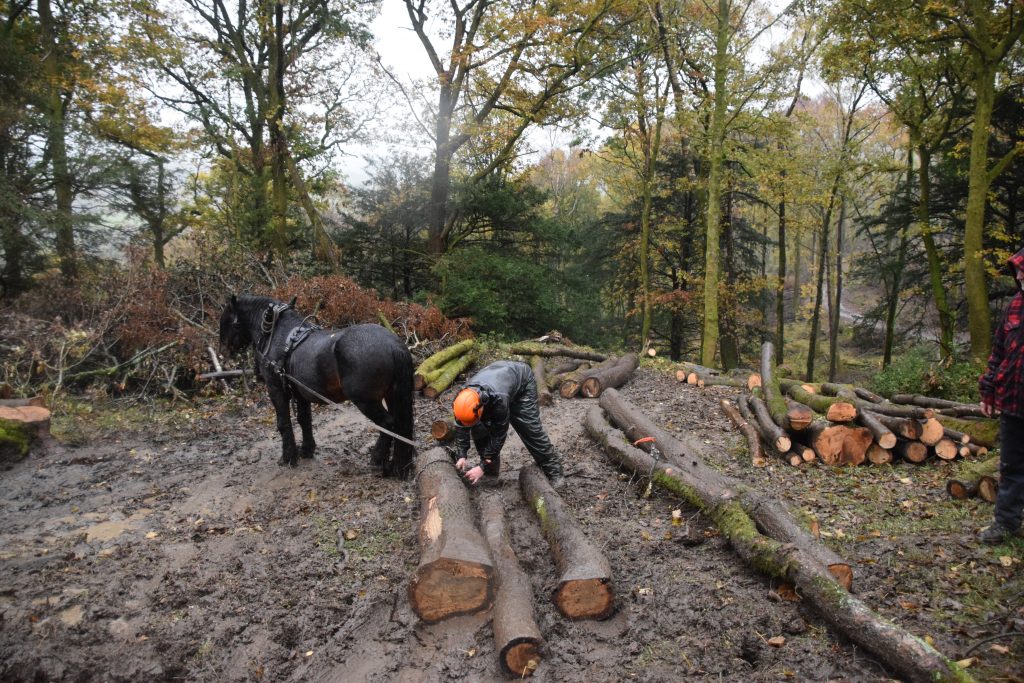

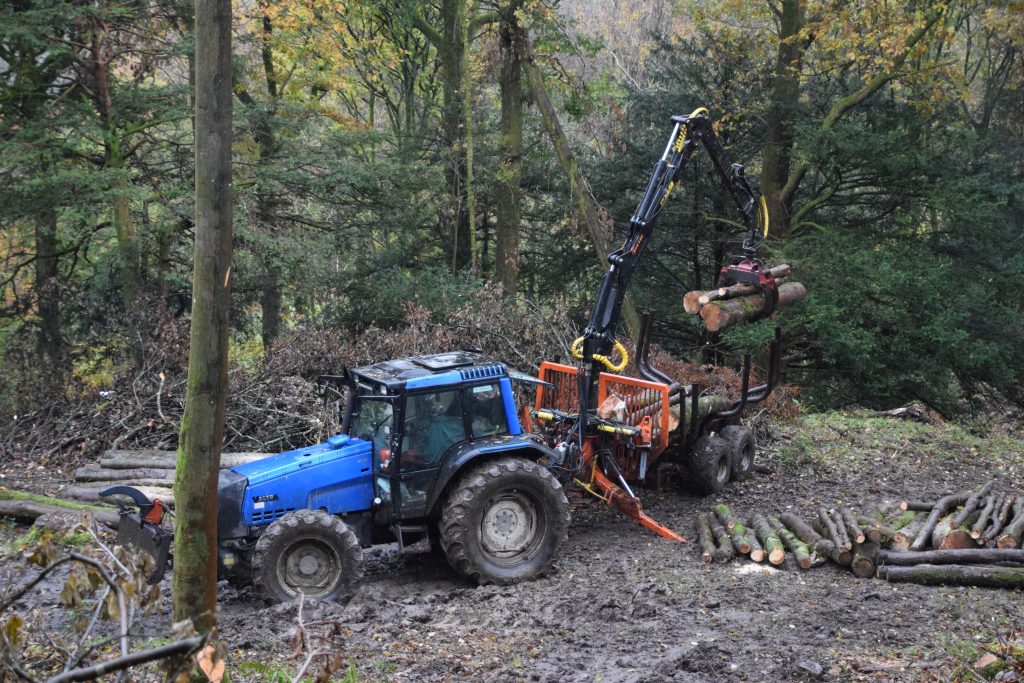



-
That’s a remarkable amount of work hours for a single machine, the Norcar 600 owned by Erkki Rinne is taken well care of, it even has the original Diesel engine.
-
Kieran Anders is a forestry contractor working in the lake district. His work involves hand cutting and extracting timber using a skidder and tractor-trailer forwarder.
-
It is not possible to eliminate chain shot, but there are simple steps that can be taken to reduce the risk.
-
Arwel takes great pride in the fact that the mill has no waste whatsoever, “the peelings are used for children’s playgrounds, gardens and for farm animals in barns in the winter and the sawdust has multiple uses in gardens and farms as well.
-
Timber hauliers need to encourage young blood in, and also look after the hauliers we have, we need make the sector a safe and positive place to work.
Find Us On
Related Posts
Forest Machine Magazine is written and edited by a forest professional with over 40 years hands on experience. We are dedicated to keeping you informed with all the latest news, views and reviews from our industry.
To support us you can subscribe to our bi-monthly magazine which is delivered to your door from only £30 per year.
Subscribe here
#homeoflogging #writtenbyloggersforloggers #loggingallovertheworld
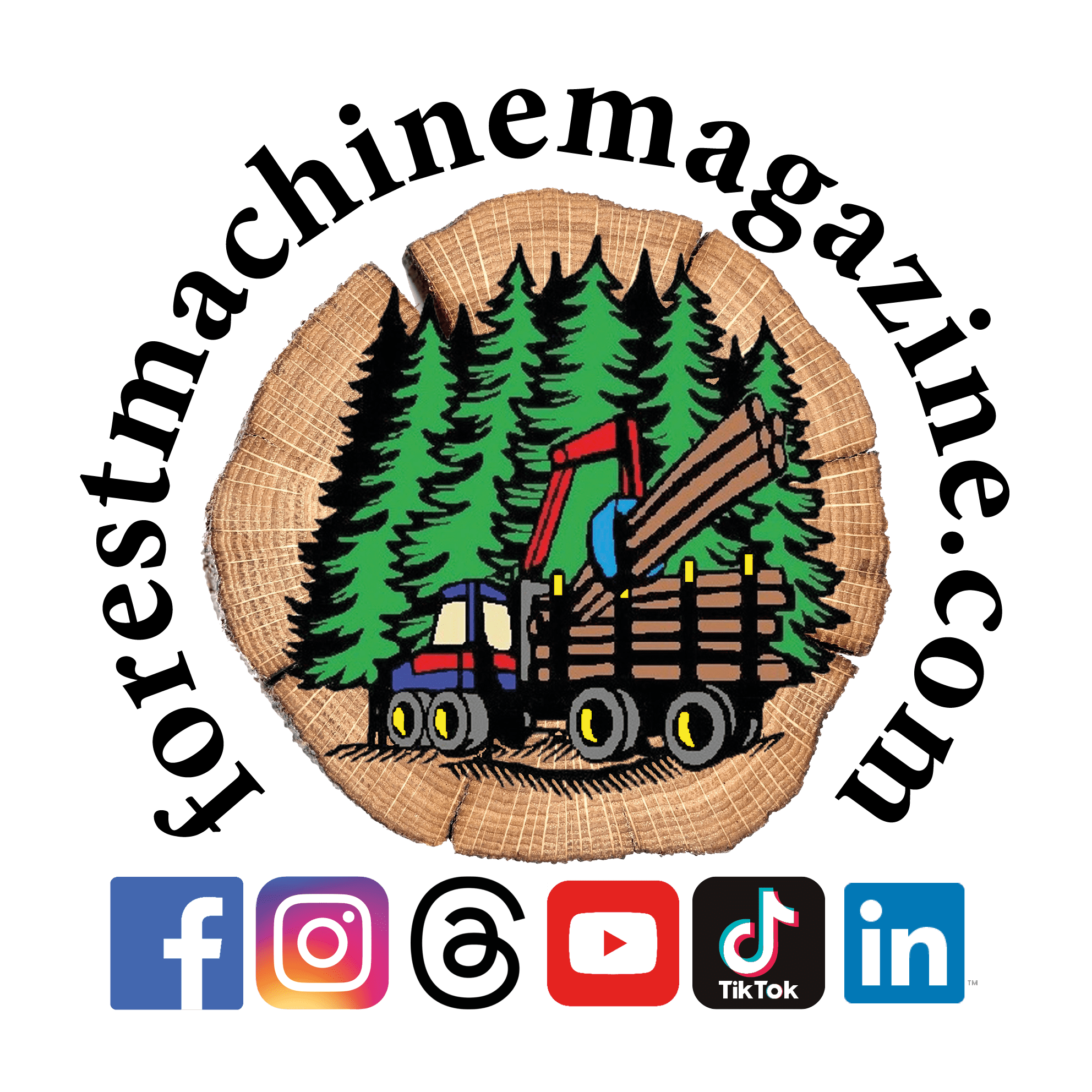
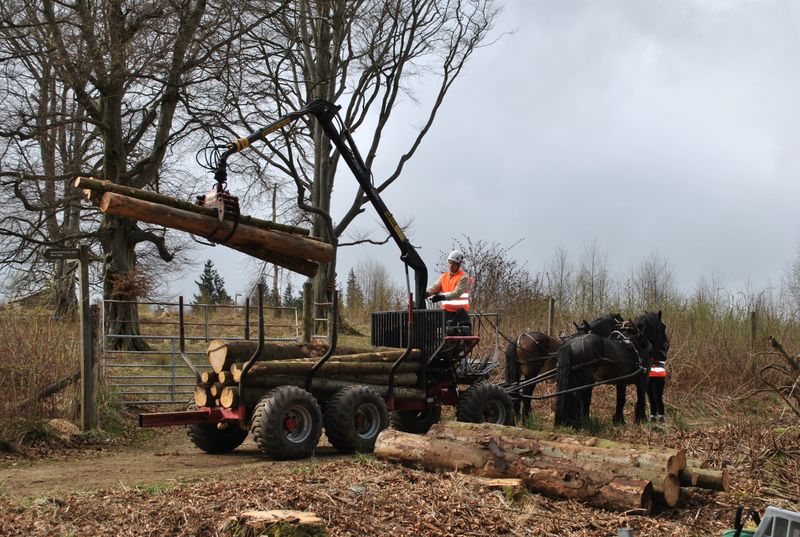
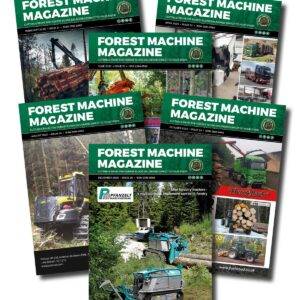
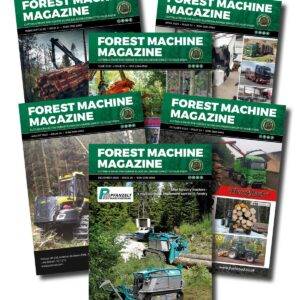




[…] READ MORE: Horse Logging In The Lake District […]